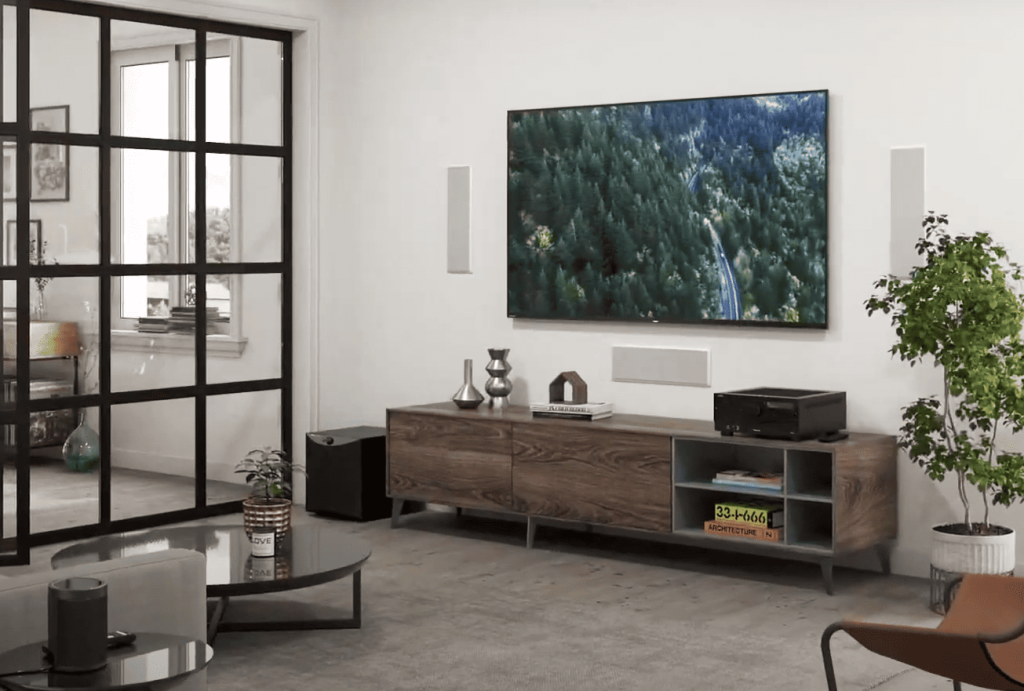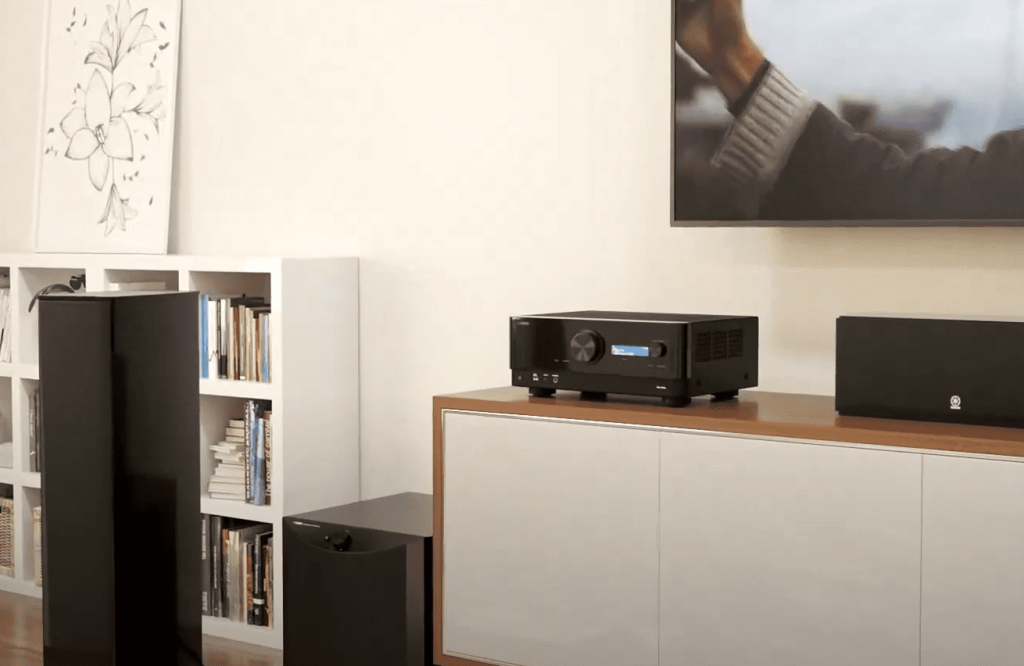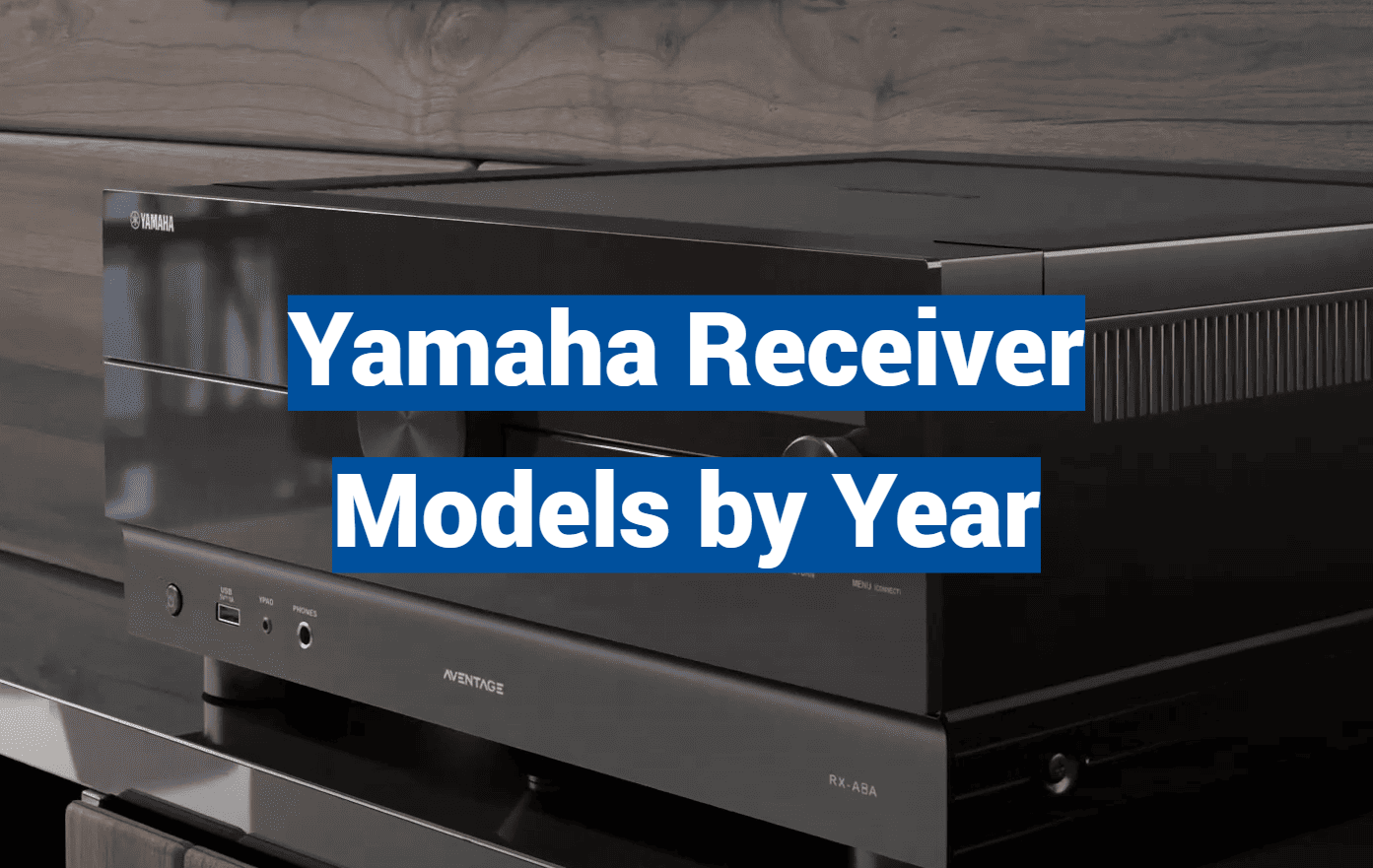Did you know one audio brand has released over 120 home theater systems since the 1970s? This staggering number reflects decades of engineering mastery aimed at transforming how we experience sound. For over 50 years, these devices have evolved from basic stereo units to advanced hubs supporting immersive formats like Dolby Atmos and 8K video.
This guide walks you through the milestones that defined audio innovation. You’ll see how early designs prioritized crisp stereo sound, while modern iterations integrate Wi-Fi, voice control, and AI-driven calibration. Each era introduced features that set new standards for clarity and connectivity.
Whether you’re hunting for vintage warmth or crave the latest tech, understanding these advancements helps you choose wisely. We’ll compare standout releases, decode technical jargon, and highlight what makes specific generations unique. You’ll also learn why certain models remain sought-after by collectors and home theater enthusiasts today.
Key Takeaways
- Explore five decades of audio engineering breakthroughs
- Learn how features like surround sound and wireless connectivity evolved
- Identify which releases balance performance and affordability
- Discover why older units still compete with modern alternatives
- Get tips for maintaining and upgrading legacy systems
Introduction to Yamaha Receiver Models by Year
Imagine experiencing cinema-quality sound from your living room decades before streaming existed. This vision became reality through groundbreaking audio engineering that redefined home entertainment. Let’s explore how one brand’s innovations shaped the way we listen today.

Overview of Yamaha’s Legacy
In 1986, a digital audio processor changed everything. The DSP-1 introduced 6-channel surround effects, a leap forward when most systems used basic stereo. It processed spatial soundscapes so effectively that filmmakers later adopted similar tech.
By 1994, the first true multichannel home theater hub arrived. The DSP-A1 supported 5.1 audio with Dolby and DTS formats, making blockbuster movie nights at home feel theatrical. These milestones cemented the brand’s reputation for pushing boundaries.
| Feature | DSP-1 (1986) | DSP-A1 (1994) |
| Channels | 6-channel processing | 5.1 surround support |
| Key Innovation | Digital sound fields | Dolby/DTS compatibility |
| Legacy | Pioneered spatial audio | Set AV receiver standards |
Purpose and Scope of the Ultimate Guide
This resource helps you track how audio tech evolved from analog roots to today’s AI-powered systems. Discover why early models still impress collectors and how newer releases integrate voice controls or 8K video.
We’ll break down specs without jargon, compare standout features across eras, and highlight hidden gems. Whether you’re restoring vintage gear or building a modern setup, you’ll learn what makes each generation unique.
The Evolution of Yamaha Audio Technology
Picture this: Your favorite movie scenes come alive with sound so realistic you instinctively duck when explosions hit. This magic began in the mid-1980s as stereo TV broadcasts sparked a new era for home entertainment. Brands recognized the need to match visual quality with immersive audio experiences.
Milestones in Innovation
The late 1980s saw Dolby Surround become a game-changer. A standout advancement arrived through digital decoding chips that transformed stereo signals into multi-directional soundscapes. One pioneering solution used sophisticated processing to simulate concert hall acoustics, making living rooms feel like premium theaters.
By 1993, a new standard emerged with CINEMA DSP. This tech analyzed audio waves to recreate iconic venues’ unique reverberations. Suddenly, dialogue clarity improved while background effects gained spatial precision—a leap beyond basic surround setups.
Key Technological Advancements Over the Years
The late 1990s introduced 5.1-channel systems, offering discrete audio streams for deeper immersion. Automatic room calibration tools followed, simplifying setup for non-experts. These innovations proved that high-fidelity sound shouldn’t require hours of manual tweaking.
Modern systems focus on seamless integration. Wireless connectivity and AI-driven adjustments now personalize listening experiences. Though formats evolve, the core goal remains: making every note, whisper, and explosion feel authentically present.
“Great sound design doesn’t announce itself—it pulls you into the story.”
Understanding Receiver Specifications and Components
Modern home theaters demand components that keep pace with both visual and auditory advancements. Let’s break down what makes today’s systems tick—from crystal-clear visuals to room-filling audio precision.
HDMI, Surround, and Video Capabilities
8K resolution at 60Hz and 4K/120Hz support ensure razor-sharp motion clarity for fast-paced sports and gaming. HDR10+ and Dolby Vision adapt brightness frame-by-frame, preserving shadow details in dark scenes while making explosions pop visually. Seven HDMI inputs handle 4K Blu-ray players, game consoles, and streaming boxes simultaneously.
Gamers benefit from Auto Low Latency Mode, which cuts lag during intense matches. Variable Refresh Rate syncs screen updates with console output, eliminating stutter in action-packed titles. These features transform living rooms into competitive arenas or cinematic escape pods.
Power, Inputs/Outputs, and Audio Characteristics
Entry-level 5.2-channel systems deliver 80 watts per channel—enough for apartments—while flagship 11.2 setups push 150W to fill large spaces. Reinforced chassis designs minimize vibrations, letting dialogue cut through bass-heavy scenes without distortion.
High-end DACs preserve dynamic range, ensuring whispers remain audible and gunfire stays impactful. Multiple optical/coaxial outputs connect subwoofers or rear speakers, while phono inputs cater to vinyl enthusiasts. Room calibration tools automatically adjust EQ settings based on your space’s acoustics.
“True immersion happens when tech disappears, leaving only the story’s emotional punch.”

yamaha receiver models by year: A Comprehensive Review
Upgrading your home theater system every few years isn’t just about chasing specs—it’s about keeping pace with storytelling innovations. Let’s explore how key releases adapted to new media formats while maintaining audio excellence.
From Analog to AI-Driven Systems
The mid-’90s saw Dolby Pro-Logic processing in units like the 1993 DSP-A2070. These early workhorses blended amplification with decoding, creating immersive environments for VHS tapes and laserdiscs. By 1996, DVD’s arrival pushed 5.1-channel support into the DSP-A3090, letting explosions rumble from dedicated subwoofers.
High-definition video changed everything. The 2006 RX-V1 added component video switching for Blu-ray players, while 2012’s RX-Z9 upscaled older devices to match 1080p displays. Each leap solved real problems—no more cable clutter or mismatched resolutions.
Shifting Priorities in Home Entertainment
Streaming services reshaped expectations. The 2019 RX-Z7’s HDMI 2.1 ports enabled 4K/HDR passthrough for Roku devices. Today’s CX-A5000 models manage dual HDMI outputs, letting you game in one room while streaming music elsewhere.
“Every upgrade felt necessary—not just flashy. New formats demanded better gear to unlock their potential.”
This journey reveals a pattern: major tech shifts arrive every 6-8 years. Early adopters benefit first, but well-designed systems stay relevant for a long time. Whether you prioritize vintage warmth or cutting-edge connectivity, understanding these timelines helps build future-proof setups.
Design and Build Quality of Yamaha Receivers
Lift one of these machines, and you’ll immediately sense engineering precision. The weight distribution feels purposeful—like every ounce serves acoustic excellence. This philosophy shines brightest in the AVENTAGE lineup, where structural integrity meets audiophile-grade components.

Engineering Excellence in Action
The secret sauce? A unique five-foot chassis design. Dubbed the ART Wedge, it reduces internal vibrations by 38% compared to standard frames. Three feet support the front, while a central fifth foot stabilizes sensitive circuits. This setup isolates delicate parts from amplifier heat and magnetic interference.
| Model | Weight | Power Output | Key Benefit |
| RX-A4A | 35.7 lbs | 110W/channel | Balanced performance |
| RX-A8A | 47.2 lbs | 150W/channel | Cinema-level dynamics |
Inside, oversized transformers deliver instant power reserves during intense scenes. Premium DACs preserve subtle details—think raindrops in quiet dialogues or guitar string vibrations. These choices create dynamic range that breathes life into both whispers and explosions.
Glossy surfaces give the units a luxury feel, though fingerprints show easily. The central control knob offers satisfying resistance when adjusting volume—a tactile nod to analog roots. While stunning in showrooms, regular dusting keeps them camera-ready.
From 7.2 to 11.2 channel configurations, these systems adapt to spaces big and small. Whether powering bookshelf speakers or floor-standing towers, they maintain clarity at any volume. It’s engineering that disappears, letting pure sound quality take center stage.
Integration with Home Theater Components
Creating a seamless home theater experience starts with smart connections. Modern systems act as nerve centers, linking gaming consoles, streaming devices, and legacy DVD players through multiple HDMI ports. This flexibility lets you enjoy 4K movies while keeping vintage gear relevant.
Voice assistants like Alexa simplify control through natural commands. Say “play jazz in the living room” and watch lights dim as music starts. HDMI-CEC syncs devices so your TV powers on when you launch a Blu-ray player.
Automatic calibration tools adapt sound profiles to your room’s quirks. Sensors measure distances between speakers while adjusting frequencies to combat echo. These features ensure dialogue stays crisp even in challenging spaces.
For vinyl lovers, phono inputs preserve analog warmth. Wireless subwoofers eliminate cable clutter without sacrificing bass depth. Whether building new or upgrading piecemeal, today’s audio hubs bridge past and future entertainment seamlessly.


